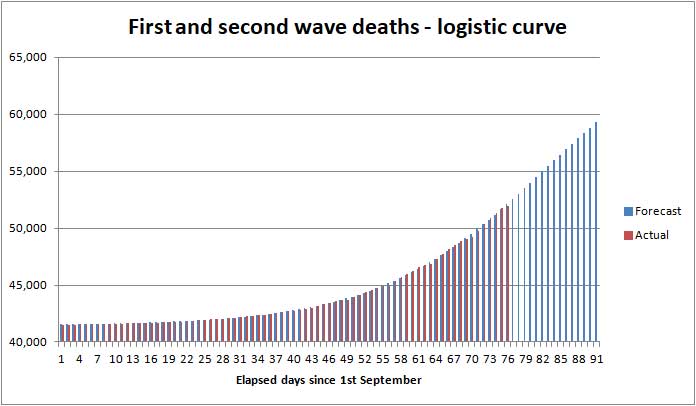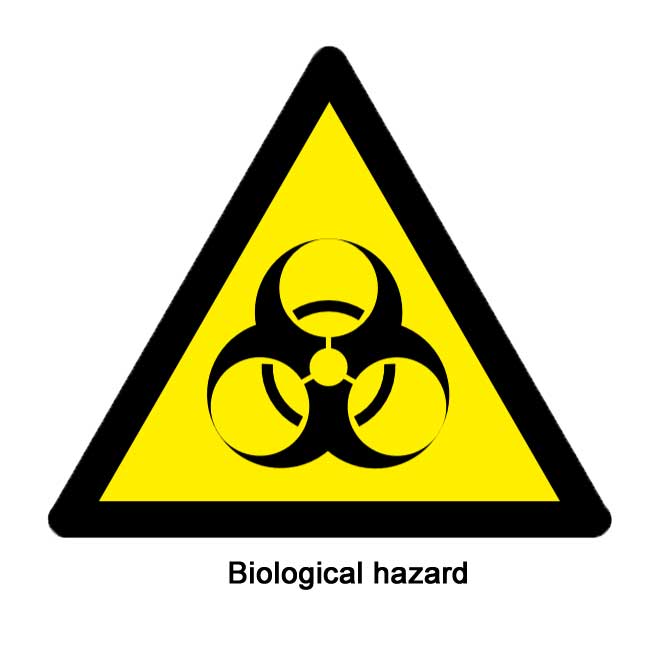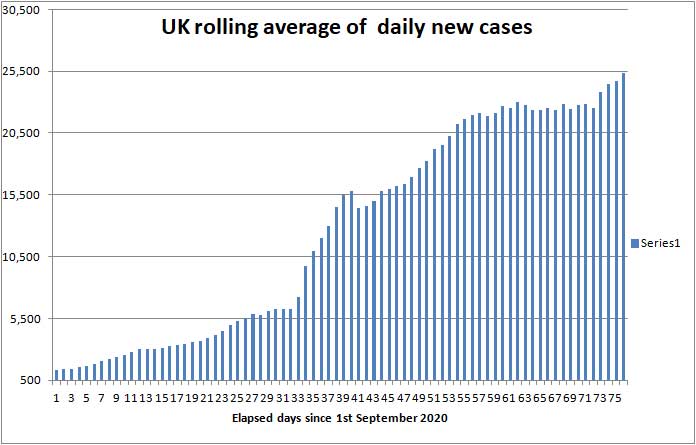
Angus and Rosemary's Miscellany
of Malvern - Other Resources
|
Coronavirus (COVID-19) epidemic weekly update for Malvern SeniorsCOVID LOCKDOWN - STAY HOME Archived 22nd November Skip to menu of archived pages PreambleWe keep an eye on the published government figures to asses the level of risk in the Malvern Hills district, if there is an uptick in cases we will tell you. This page is updated every Sunday between 1800 and 2400 hours GMT.
|
| Districts of Worcs | Cases | Weekly increase | Population |
| Bromsgrove | 1,938 | +276 | 98,529 |
| Malvern Hills | 811 | +95 | 77,545 |
| Redditch | 1,552 | +285 | 85,317 |
| Worcester | 1,572 | +303 | 103,542 |
| Wychavon | 1,583 | +231 | 126,240 |
| Wyre Forest | 1,627 | +292 | 100,957 |
| TOTAL | 9,083 | +1,482 | 592,130 |
| COMPARE WITH | |||
| County of Hereford | 2,054 | +341 | 195,000 |
| Leicester (city of) | 14,474 | +1,935 | 400,000 |
Cumulative cases reported by PHE in Worcestershire to 15th November 2020
Unless these numbers are considerably reduced Worcestershire is likely to be placed into TIER 2 when the lockdown ends on 2nd December.
Ninety five cases of COVID-19 were reported in the rural Malvern Hills compared to ninety last week, suggesting R remains close to 1.
At the bottom of the new Coronavirus Dashboard there is an Interactive Map which is coloured to show the variation in infection rates across the country. The darkening colours show how the infection has continued to strengthen and creep southwards into Staffordshire, and leach from Birmingham into Worcestershire.
If you keep clicking the plus sign (+) to enlarge the map eventually you will see for example areas of Malvern, Guarlford and Madresfield; if you click each of these a box pops up which shows the number of cases in the last reported seven days, and a rolling average normalised to 100,000 population per week so rates can be compared across the country.
Note: the Interactive Map works on desktop PCs but you may encounter difficulties using a tablet or smartphone.
Click for Interactive Map of COVID cases
Recent weekly cases to 10th Nov have been Malvern Wells and Priory 11; North Malvern 12; Malvern Link 6; Barnards Green 3; Callow End, Colletts Green and Hanley 6; Upton and Welland 8. The picture changes daily.
Number of deaths
Public Health England reports that the cumulative total of COVID (28) deaths in UK hospitals and care homes has risen by 2,890 this week to 51,934 while the rolling 7 day average has increased from 332 to 413 deaths per day; in comparison averaged over recent years 1,700 people die daily from all causes.
Most COVID deaths are currently in the north of England and South Wales where infection rates are highest, but deaths are now beginning to occur in Worcestershire (see commentary).
The Office of National Statistics (ONS) separately reports registered deaths in England and Wales where COVID-19 is mentioned on the death certificate. The ONS figures lag the PHE figures by 10 - 14 days and do not include NI and Scotland, so are lower than the more recent figures published by PHE.
The ONS figures are broken down by Hospital Trust so one can glimpse where deaths are occurring. The cumulative total of COVID related deaths in Worcestershire reported by the ONS up to 30th October is shown below.
| Districts of Worcs | Deaths | Weekly increase | Population |
| Bromsgrove | 134 | 0 | 98,529 |
| Malvern Hills | 47 | 0 | 77,545 |
| Redditch | 60 | 0 | 85,317 |
| Worcester | 65 | +1 | 103,542 |
| Wychavon | 114 | +1 | 126,240 |
| Wyre Forest | 125 | +2 | 100,957 |
| TOTAL | 548 | +4 | 592,130 |
Cumulative COVID deaths registered by ONS to 30th October 2020
This week there were just 4 COVID deaths in Worcestershire, all in care homes.
Click for national ONS data on deaths (Excel spreadsheet)
Click to view UK government Coronavirus Dashboard
In total in England and Wales 1,500 COVID related deaths were reported by ONS in the week to 30th October, an increase of 457 (44%) on the week before confirming the death rate is continuing to accelerate. Of these 177 were in Care Homes, 87 at home, and 1,214 in hospital. The highest number of hospital deaths by Lower Tier Local Authority were:
Warrington 13, Blackburn with Darwen 13, Nottingham 19, County Durham 10, Northumberland 11, Bournemouth Christchuch and Poole 12, Wyre 10, Bolton 13, Manchester 18, Oldham 15, Rochdale 15, Salford 12, Tameside 17, Wigan 34, Knowsley 19, Liverpool 30, St Helens 12, Sefton 17, Wirral 14, Barnsely 15, Doncaster 30, Rotherham 10, Sheffield 18, Sunderland 11, Birmingham 19, Bradford 13, Kirklees 11, Leeds 30, Gateshead 10, Bridgend 13, Rhondda Cynon Taf 21, Betsi Cadwaladr University Health Board 13, Aneurin Bevin University Health Board 23, Cardiff and Vale University Health Board 10, Cwm Taf Morgannwg University Health Board 36, Swansea Bay University Health Board 16.
The cluster of deaths in the Bournemouth area on the south coast is surprising, but it only takes only one visitor to spark off a new fire.
The gentle acceleration in the COVID death rate should, at least temporarily, begin to slow towards the end of November following the daily number of new cases flat-lining earlier in the month.
Note: Statistician Sir David Spiegelhalter of Cambridge University speaking on BBC TV said that, as a rule of thumb, hospital admissions were likely to be about 10% of new cases, one week after symptoms; and deaths were likely to be about 2% of new cases, 2 to 3 weeks after that - which points towards 480 deaths per day by the end of November.
The death rate could then gradually begin to fall in December if the lockdowns in NI, Wales and England were to result in a decrease in daily new cases. However that is not certain if, for example, the COVID virus is being spread by Primary and Secondary school children. One can only hope that government scientists and university researchers are building a picture of the 'pathways' by which the virus is spread.
Healthcare
The UK government Coronavirus Dashboard includes important information about COVID-19 patients in hospital.
| Hospital cases (UK) | Number | Weekly change |
| Patients in hospital | 14,915 | +1,966 |
| Patients on ventilation | 1,355 | +170 |
| Patients admitted daily | 1,922 | +301 |
Headline summary of patients in hospital as of 15th November 2020
Although these headline figures are not updated regularly they show a slightly concerning upward trend.
-
The number of patients in hospital reflects beds that are not available to 'elective' NHS patients. Two weeks ago the level was already said to be 60% of that in April when the NHS was overstretched and in those days almost totally devoted to caring for COVID patients.
-
At the height of the epidemic in April the number of patients occupying mechanically ventilated beds reached 3,000 and forty five percent of this number are already being used despite ventilators proving less valuable than originally thought.
-
The number of COVID patients admitted daily gives both a measure of how quickly hospitals are filling and more importantly an indication of the death rate to be anticipated in the following month.
Professor Peter Horby of Oxford University said on the Andrew Marr show that up to 20% of COVID patients in hospital could die. If this is correct, the current admission rate of 1,922 new COVID patients per day points to about 385 hospital deaths per day in early December, to which must be added forecast COVID deaths in other settings, such as Care Homes. Adding 25% for the latter suggests an estimate of the order of 480 deaths per day in mid December.
Note: very sick COVID patients are said to arrive in hospital 7 to 10 days after first symptoms, and either die or are discharged 15 to 30 days after first symptoms in most cases. Hospital beds are occupied by suspected COVID patients, very sick COVID patients, and a few suffering from 'Long COVID' who may remain in hospital for much longer than 30 days.
Forecast for the week ahead
Trends suggest that during the next seven days (up to 22nd November) the cumulative total of UK COVID-19 cases reported by PHE on the Coronavirus Dashboard can be expected to increase by approximately 174,000 towards 1,543,500 cases further increasing pressure on the NHS.
In Worcestershire up to 1,700 new cases of COVID-19 can be expected, and possibly up to 100 cases in the Malvern Hills district.
Ideally what we want to see is the daily number of new cases beginning to fall, but so far there is no light at the end of the tunnel.
The exponential rise in deaths during September and October has shown signs of slowing in the last week, so we have revised our worst case estimate of deaths downwards.
We now estimate the number of COVID (28) deaths will increase by about 3,400 nationally towards 55,400 during the 7 days ending 22nd November when the UK daily death rate could be nearing a peak of approximately 500 deaths per day.
In the county of Worcestershire, assuming a 2% death rate, the 1,482 new cases this week could translate to a maximum of 30 Worcestershire deaths per week by early December, but if cases are mostly confined to younger age groups it could be less. In the 7 days to 14th November there were 12 COVID deaths in Worcestershire Acute Hospitals NHS Trust, the highest number since the summer.
Looking to the longer term, based on the recent limiting of daily cases and using the 'rules of thumb' mentioned above, we think likely there will be approximately 480 national deaths per day towards the end of November and in early December.
The chart below shows deaths to date in red and our revised estimate of likely future deaths up to the end of November in blue.

Revised forecast of cumulative deaths to 30th November
Thereafter were cases to decline following the second lockdown the death rate could slowly begin to fall.
During this period, while the second wave death rate is at its peak, the storing of bodies in temporary mortuaries and some delay to funeral services should be anticipated between late November and early January due to a likely 30% rise in demand.
Providing people continue to act sensibly over Christmas 'adequate' control measures could result in a reduction of new daily cases in December with a consequential slowing of the daily death rate in January 2021, by which time the first vaccines may begin to come on stream for small numbers of NHS staff, care workers, and the elderly. Note however it is forecast that it will take towards the summer to vaccinate a significant fraction of the UK population.
Another scenario is that the lockdown measures do not dampen the virus. We'll just have to wait and see!
Advice for Seniors

The COVID virus is spreading increasingly widely and there are pockets of infection across the Malvern Hills and Worcestershire, so we now consider the risk to have become HIGH for Seniors living in the Malvern Hills district; see our riskometer opposite.
If you catch COVID there is a significant chance that you will either die or your long term health may be seriously damaged, so take care.
During the lockdown in November, subject to exceptions, you must not mix with other households.
The simple safeguards to remember are still to:
-
wash your hands thoroughly for 20 seconds, including after handling deliveries to your home (HANDS) see note 1;
-
wear a face mask when appropriate for example when shopping or visiting the chemist (FACE);
-
avoid mingling especially in crowded places, and continue with precautions such as physical distancing by 2 metres (SPACE) keeping proximity with others brief (TIME) see note 2.
Hence the mantra:-
HANDS, FACE, SPACE, TIME - GET A TEST if you feel unwell
Click for UK government Coronavirus guidance on what you can and cannot do
Remember, if you have symptoms of COVID-19 and can't count from one to ten out loud due to shortness of breath, you should immediately call your GP, 111 or 999 for advice.
Notes:
1) Wash your hands thoroughly before touching your face to avoid transferring virus from surfaces to your mouth, eyes and nose.
2) Minimise time spent mixing with others in indoor settings - an invisible mist of virus can build up in the air if the space is shared with an infectious person; imagine people exhaling cigarette smoke. Unless you wear a hospital grade face mask you can breath this in; a face covering will offer little or no protection. The likelihood and extent you get sick will depend on the density of the airborne virus and your exposure time.
Annex to 15th November update
Commentary
Attention in the media this week has centred on the Pfizer COVID vaccine announcement, the 'sacking' of Lee Cain and Dominic Cummings, and BREXIT trade talks.
The announcement by Pfizer that their COVID vaccine developed in conjunction with BioNTech had been found 90% effective in trials has raised hopes of a way out of the COVID epidemic. Two doses may be necessary spaced 4 weeks apart, with maximum protection being achieved 4 weeks after that. The bad news is that the Pfizer COVID vaccine needs to be stored at minus 70 deg C, making it difficult though not impossible to distribute in the UK. Probably no good for Africa.
The other major news was that the PMs Director of Communications Lee Cain had resigned and the next day the PMs special adviser Dominic Cummings left 10 Downing Street holding a cardboard box to work at home until the end of his contract in December. Downing Street Chief of Staff Eddie Lister is also rumoured to be leaving, so it looks as though the PM has decided to replace his team in Downing Street.
Former journalist Allegra Stratton is the new Downing Street Press Secretary.
The lockdown in Northern Ireland hasn't achieved the results expected so has been extended for a further week.
On Thursday Matt Hancock fielded questions on BBC Question Time, speaking mainly about distribution of the Pfizer vaccine.
On Sunday Professor Ugur Sahin of BioNTech appeared on the BBC Andrew Marr show and spoke at length about his Pfizer COVID vaccine. You can watch the interview on the BBC IPlayer.
Professor Ugur imagines it will take until the summer to vaccinate the UK population, so COVID vaccines are unlikely to be of much help this winter.
The table below shows recent COVID deaths in Worcestershire Acute Hospitals Trust reported by the NHS.
| Date | Number |
| 8th November | 1 |
| 9th November | 2 |
| 10th November | 2 |
| 11th November | 4 |
| 12th November | 2 |
| 13th November | 1 |
| 14th November | 0 |
| Total | 12 |
Worcester Acute Trust hospitals COVID deaths in 7 days to 14th November 2020
No deaths were reported in Worcestershire Health and Care Trust hospitals during this period.
To date a total of 308 COVID deaths have been reported in Worcester Acute hospitals and 29 in 'Care' hospitals.
Postscript: On Monday 16th November it was announced the PM and 4 other MPs were self isolating after a meeting with Conservative MP Lee Anderson who had been tested COVID positive. Matt Hancock speaking on the radio suggested the lockdown in England might need to be extended beyond the 2nd December as had been suggested earlier by Michael Gove. The PM had indicated the lockdown would definitely end on 2nd December so there are mixed messages coming from the government. Businesses are going to squeal if the lockdown is extended. Perhaps Allegra Stratton should clear the air!
Summary of Links
Symptoms
Article about the effects of Coronavirus on the human body
Reporting and how to obtain a test
How to get a test
https://www.nhs.uk/coronavirus
About joining the Zoe COVID Symptom Study:
Guidance
UK government Coronavirus guidance
Statistics
UK government Coronavirus Dashboard
Coronavirus Dashboard Interactive map
ONS data on deaths in England and Wales (Excel spreadsheet)
Snapshots of deaths in hospital in England. This is not consolidated, so best see the Coronavirus Dashboard to view trends.
Reports
National COVID-19 surveillance reports
ONS Coronavirus (COVID-19) roundup: Deaths and health
The bigger picture
Worldometer summary of coronavirus cases worldwide
European Centre for Disease Prevention and Control info
https://www.ecdc.europa.eu/en/geographical-distribution-2019-ncov-cases
WWorld Health Organisation info
Window on the USA
Centre for Disease Control (CDC)
American Association of Retired People (AARP)
Worcestershire
Help
http://www.worcestershire.gov.uk/here2help
Outbreak Control Plan
http://www.worcestershire.gov.uk/coronavirus
Miscellaneous
Spanish Flu
Dr Jeff Kildea's commentary about the 1919 outbreak of Spanish Flu in Australia
Views of Martin McKee, Professor of European Public Health
Follow Martin McKee on Twitter
SAGE membership
Scientific Advisory Group for Emergencies (SAGE)
Scottish government:
Link to Scottish Government website

The interpretations and opinions expressed are our own
Last updated 16th November 2020
 Blogs
>
Blogs
> How
to request a test
How
to request a test Please
consider helping others by downloading the COVID Symptom Study app onto your
smart phone or Ipad and reporting how you feel either daily, or as you are
able. Note that currently there is no desktop PC version.
Please
consider helping others by downloading the COVID Symptom Study app onto your
smart phone or Ipad and reporting how you feel either daily, or as you are
able. Note that currently there is no desktop PC version.